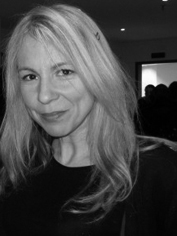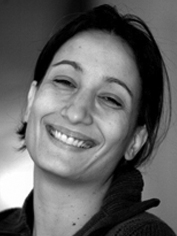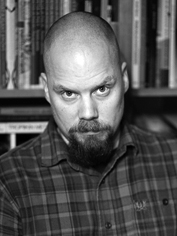KEYNOTE SPEAKERS
KEYNOTE SPEAKERS

Gregory Paschalidis
Aristotle University of Thessaloniki (Greece)
Title of presentation: The Pedagogy of Monsters
Abstract
The monster marked our cultural, racial, and moral Others for centuries. A diverse population of monsters inhabited the boundaries we drew in all directions, operating as the third pole in the triad normal/pathological/monster. In the process, however, this vast empire of monsters has disintegrated. The ‘monster’ was largely demystified and either transformed into the pathological – an individual or social illness, potentially curable, and always redeemable as a dysfunction – or reformed as ‘difference.’ At the same time, our teratological imagination has continued to thrive but in an entirely different direction. In contemporary art, literature, comics, and cinema, an extravagant new breed of monsters has emerged, redeeming the ‘monstrous’ as the cultural trope of choice for heralding an expanded, posthuman anthropology. How come, though, our present, highly reflective stage of the Anthropocene once again resorts to the allegory of the monsters? What makes them retain their privileged role as our most persuasive educators?
Gregory Paschalidis is Professor of Cultural Studies at the Department of Journalism & Mass Communications, Aristotle University of Thessaloniki (Greece) where he teaches since 1996. He graduated in Sociology from the University of Manchester and holds an MA in Sociology of Literature from the University of Essex and a Phd in Comparative Literature from the University of Jannina. He has published extensively in the fields of cultural theory and cultural policy, literary theory and narratology, mass/digital media and visual semiotics. He has authored three books and edited eight collective volumes in the fields of cultural theory, mass media and semiotics. Since 2012 he is President of the Hellenic Semiotic Society (H.S.S.), and is chief editor of Punctum-International Journal of Semiotics, the online journal published biannually by H.S.S.

Lia Yoka
Aristotle University of Thessaloniki (Greece)
Title of presentation: Only to other people: orientalist and genre painting in Europe then and now
Abstract
Partially overlapping, seemingly incongruent, or definitively distinct conceptions of the Other (such as asymmetrical alterity, dynamic othering, the constitutive Other) inform a cross-disciplinary discourse on modern Western culture. We will discuss how the appreciation of orientalist and genre pictures from the late 18th to the 20th century interwar period has developed from its contemporary context to today’s art market. In examples of depictions of ritualised landscapes, liturgical settings, harems, and bodies of women, men and children in different media, several levels of othering and of constructing alterity seem to be at work, engaging ideologies of exoticism, gendered psychosexual pathology, geopolitics, aesthetics and taste, and revealing the depth and versatility of the Western political machine of cultural values.
Lia Yoka is Associate Professor of art history and theory at the School of Architecture, Aristotle University of Thessaloniki and coordinator of the “cultural theories” module at the Interuniversity Postgraduate Programme in Museology, AUTh and University of Western Macedonia. She studied history at the Aristotle University of Thessaloniki and art history at the Ludwig Maximilian Universitaet in Munichand at the University of East Anglia in Norwich. She is interested in art history and the relationship of semiotics and history.

Artemis Eleftheriadou
Frederic University (Cyprus)
Title of presentation: Visions of Cyprus, The artists’ photobook: A potent space
Abstract
Photography is perhaps one of the most widely used mediums to document and depict facets of cultural, political or social production over the past centuries. Yet, within the contemporary dialogue in the theory of photography, it is generally understood as a practice of mediation. Always generated in reference and in accordance, both to the gaze of the viewer and the creator, photography’s subjective nature enables multiple readings of images that are intentionally or unconsciously telling of ideas that go beyond formal depiction and retinal perception.
In an effort to explore various perceptions and visions of Cyprus and Cypriot identity, the presentation will focus on a selection of photographic books spanning from the initial photographic depictions of Cyprus in 1878 by John Thomson, to contemporary examples of artists’ photobooks. Geographically situated on the furthest boarder of the Eastern Mediterranean, culturally bridging Europe and the Middle East, and historically balancing the contested politics of Greece and Turkey, Cyprus -an island in flux, is perpetually caught between boarders. Although not uniquely so, pinning down Cyprus’ identity becomes continuously elusive and vague, yet compelling and challenging. In some cases, the selected books portray manifold conflicting or revealing imaginings of Cyprus, driven by predominant ideologies and political agendas of their time, and in others they question, deconstruct or suggest new versions of Cypriotness in the wider international sphere.
The presentation focuses on the power of the contemporary artists’ photobook, closely looking into two case studies where post-colonial debates on Cypriot identity are brought to light. Aspects of context, contend and formal qualities are activated and by visual acts of selection, omission, juxtaposition, erasure and text placement, the artists’ photobook, -as another curated archive- becomes an intriguing medium communicating complexed and powerful ideas. Under this light, the photographic book is no longer an innocent display album, but an autonomous space where significant issues have been debated over time. More importantly, the sum of these photographic books, becomes the material evidence of documentation that in its entirety may offer new insights on contemporary ideas on issues of identity.
Artemis Eleftheriadou (F) is an Associate Professor at the Arts and Communication Department at Frederick University, Cyprus. She focuses on the fields of art history and interdisciplinary visual communication. Eleftheriadou is a member of the board of directors of the International Association of Photography and Theory (IAPT) (photographyandtheory.com) and editor of IAPT Press since 2018. She has authored a number of articles in international art publications and art directed/edited a selection of contemporary art publications. As a curator she handled a number of exhibitions and projects that took place in local and international venues. Her most recent publications and projects include the book chapters 1. (Co)-Presence with the Past Using Emerging Technologies in Contemporary Art: Institutional Critique Re-envisioned, in Museums and Technologies of Presence, ed. Shehade M., Stylianou-Lambert T., Routledge, 2023 2. The Dig, The Fragment, and The Archive: The Archaeological Imaginary in Greek-Cypriot Contemporary Art in Contemporary Art from Cyprus, ed. Stylianou E., Tselika E., Koureas G., Bloomsbury, UK, 2021; the artsts’ books 1. One Hundred Fifty Eight Attempts for Revision, Nicolas Lambouris, ed. Eleftheriadou A., IAPT Press, Cyprus, 2022, 2. The Island of Aphrodite Vol II, Theopisti Stylianou-Lambert, Nicolas Lambouris, ed. Eleftheriadou A., IAPT Press, 2020 and the paper Visual Infotainment in the Political News: A Cultural Approach in the Post-truth Era, (co-author), MedieKultur, SMID, Denmark, 2019.

Elly Vintiadis
Deree-the American College (Greece)
Title of presentation: My species and other animals: animals, empathy, and the way forward
Abstract
Animals, like human animals, try to live and flourish in a world they have found themselves in. Due to a mix of ignorance and human exceptionalism we treat animals in ways that are often morally abhorrent and this not only affects them but also has serious repercussions in our own lives. Though it is becoming increasingly clear that we need to (urgently) expand the moral community to include, at least, non-human animals, there is reluctance to do so. In light of this, some authors have argued for a turn towards empathising with animals in order to change the status quo. In this talk I will address the problematic relationship between human and non-human animals looking at a possible way forward. A main contention will be that though an attempt to empathise with animals might be helpful for our changing attitudes toward them, this is not as straightforward as is often assumed, and that in order to re-orient our narratives what is needed is more complex and necessitates bottom-up but also top-down initiatives.
Elly Vintiadis is associate lecturer of philosophy at Deree – the American College of Greece and co-director of the Demographics in Philosophy Project which aims to address the underepresentation of women in philosophy and to increase diversity in philosophy departments. In her research she explores a range of philosophical topics, ranging across the metaphysics of mind (naturalism, emergence and explanation), the philosophy of psychiatry (mental disorders and the nature of their dependence on the social environment), epistemology, metaphilosophy and animal ethics. Her latest publications include Brute Facts, (Oxford University Press, 2018), Τα Ζώα και Εμείς (Animals and Us – EPBooks, 2020) and Philosophy by Women (Routledge, 2020).

Jukka Mikkonen
University of Jyväskylä (Finland)
Title of presentation: Art and the Changing Climate
Abstract
In the public discourse on the climate crisis, an oft-repeated saying is that we have the knowledge and the tools, and now we need to change our societies and cultures. Furthermore, it is commonly assumed that factual knowledge does not motivate change, and that appeals to emotions and imagination are needed to influence people’s thoughts and behavior. Therefore, literature and the arts have also been mobilized to fight against the climate crisis. Armies of art scholars, philosophers, psychologists, sociologists, and communication theorists, to mention some, have proposed that the arts could significantly contribute to pro-environmental attitudes and behavior; many natural scientists have echoed this opinion. The task of examining the experiential dimensions of climate change – what it will be like to live in a radically altered world – has been delegated to artists. And surely, artworks that explore environmental themes might help us fundamentally rethink our values and desires and the cultures that produce them. Yet, the scholarly industry around art and climate change is full of unfounded optimism. Little attention has been given to the possibility that artworks might also distort the audience’s understanding of the complexities of both environmental crises and sustainability transformations. Too often views on the transformative value of art also ignore the complexity and ambiguity of artworks, portraying art as merely a dramatic form of climate communication. In my presentation, I will critically explore the impact of art on pro-environmental attitudes and behavior. I will argue that art has distinctive value, but too much weight should not be placed on its instrumental benefits.
Dr Jukka Mikkonen is a Senior Researcher in Philosophy at the University of Jyväskylä, Finland. He has published extensively on the philosophy of literature and the aesthetics of nature. Currently, he is working on a research project on the role of aesthetics in environmentalism. His latest publications include Philosophy, Literature, and Understanding: On Reading and Cognition (Bloomsbury, 2021) and The Cognitive Value of Philosophical Fiction (Bloomsbury, 2013).

Nikos Bubaris
University of the Aegean (Greece)
Title of presentation: Kinesthetic narratives: bringing together people, technologies and many ‘others’
Abstract
In my presentation, I discuss locative media as distinct practices of relating media users and technologies to the environment. Nowadays, locative media mostly concern mobile applications of mixed reality in which the activation and the content of information are location-specific. In this sense, location, far from being an object of media spectacularization experienced from a distance, emerges as a knot that entangles the physical movement of people, technologies, non-human organisms, material and natural elements. Moreover, since walking is a common practice of performing locative media works, the formation of location as a knot of interweavement moves across space, and changes over time. In my talk, I elaborate on the above issues by introducing the theoretical and design tool of “kinesthetic narratives” which foregrounds sequencies of physical movement as a basic intersensorial mode of making sense of locative media works.
Nikos Bubaris is Associate Professor of Creative Media at the Department of Cultural Technology and Communication at the University of the Aegean in Greece. His research interests lie at the intersection of media studies, cultural theory and sound studies. He has several publications on locative media, sound arts and cultures, content design and user-interface design. He has produced various sound and multimedia works for art, museum and cultural exhibitions and performances.
